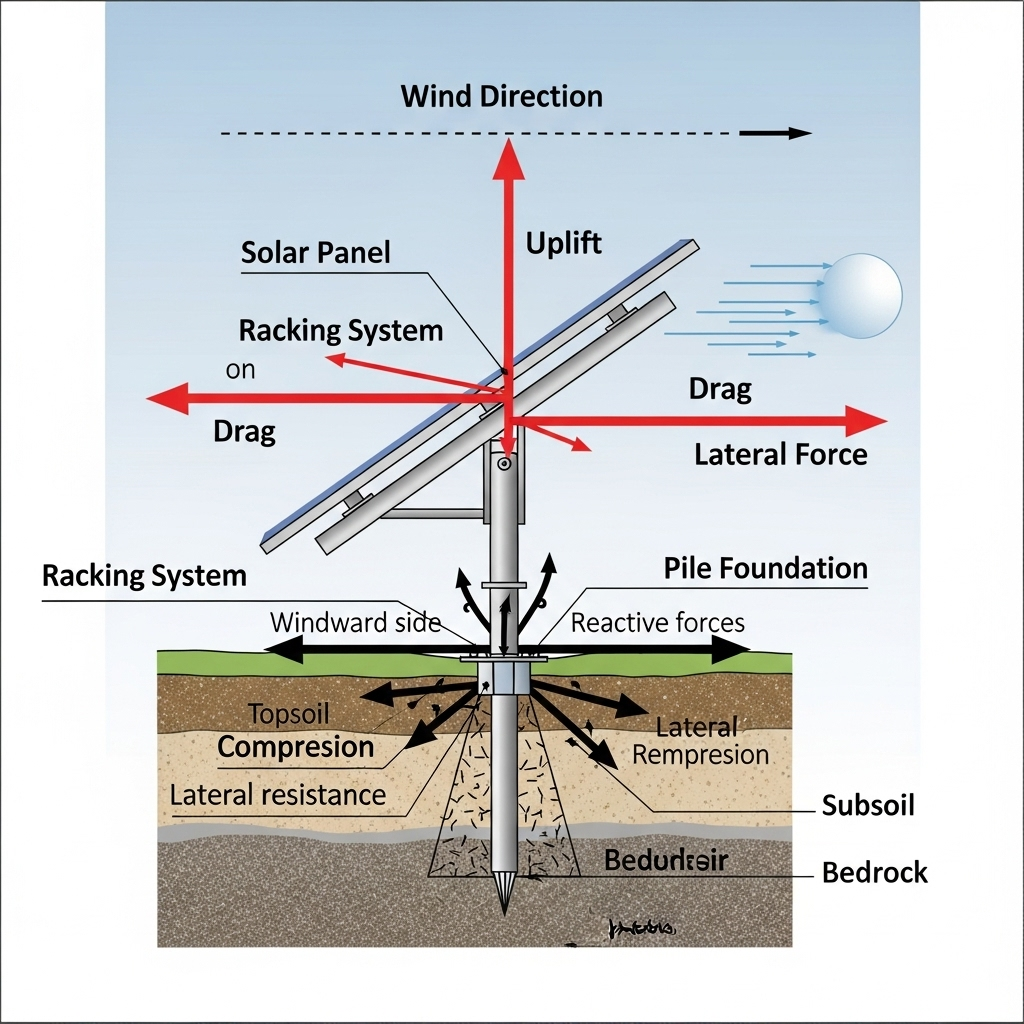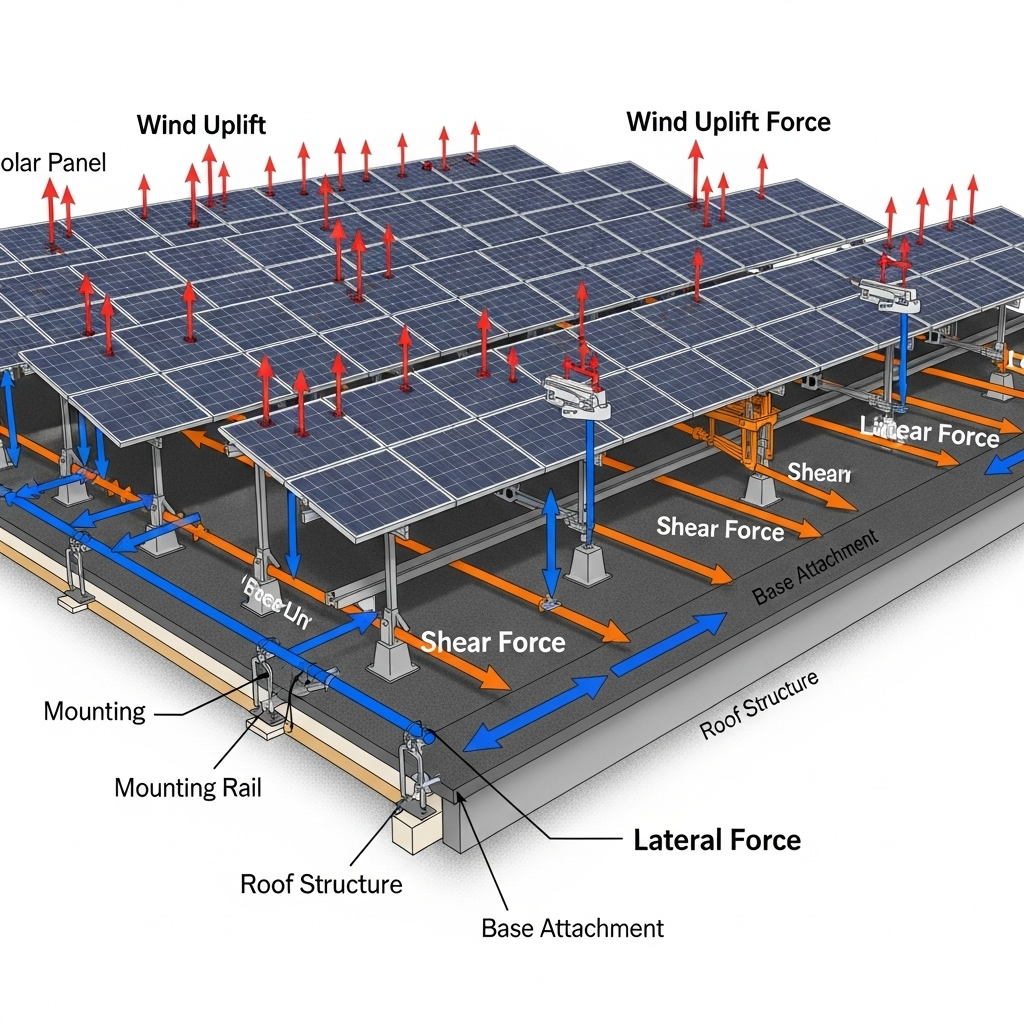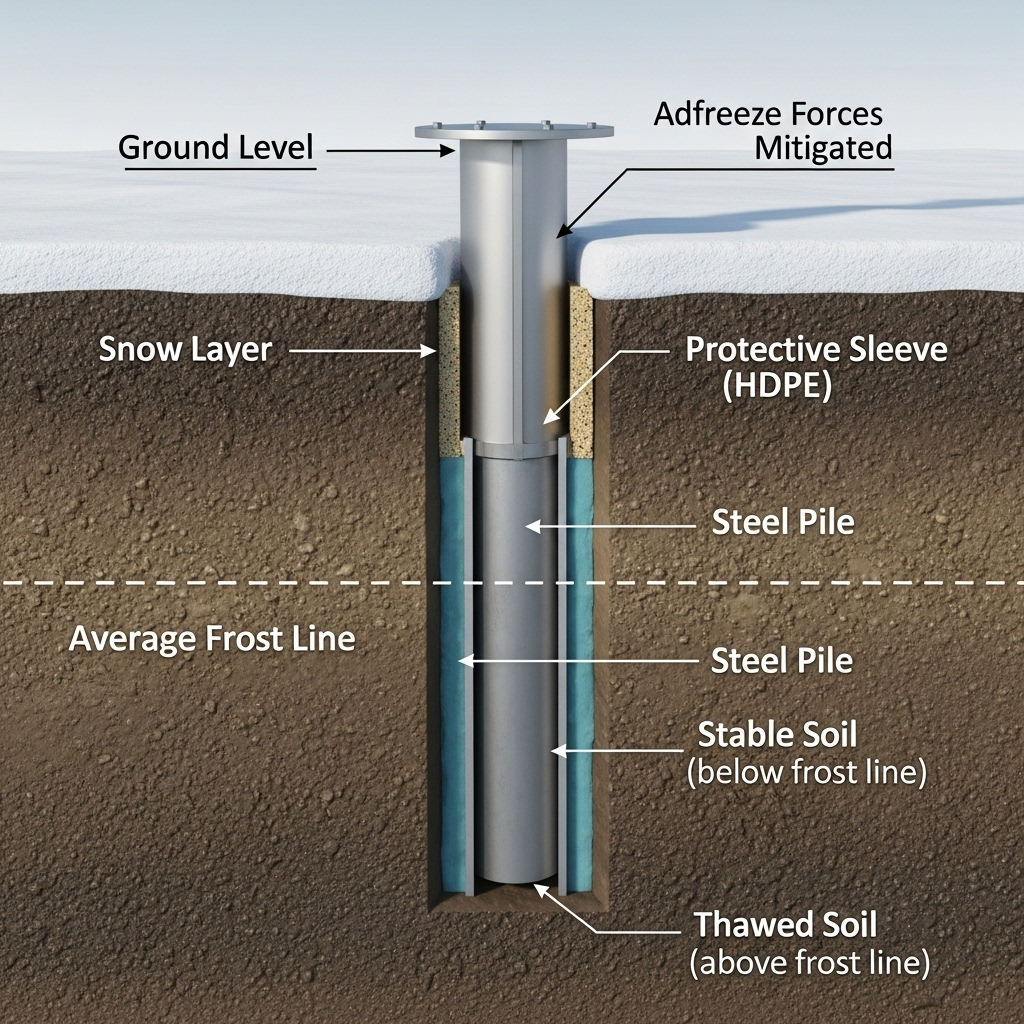The long-term performance and safety of a ground-mounted solar installation depend entirely on its foundation. While panels and inverters get much of the attention, the piles anchoring the system to the earth are what ensure decades of reliable energy production. Selecting the right solar pile foundation requires a detailed understanding of two powerful environmental forces: the ground beneath and the wind above. An incorrect choice can lead to structural failure, costly repairs, and significant energy production losses. This text explains the critical process of solar pile foundation selection by analyzing soil conditions and wind loads to ensure your project is built on a solid base.
Understanding Soil's Crucial Role in Foundation Selection
Before any steel goes into the ground, a comprehensive analysis of the soil is the most important step. A geotechnical report, prepared by a qualified engineer, provides the essential data needed to design a stable foundation. It moves foundation design from guesswork to an engineering discipline, forming the basis for all subsequent structural calculations. As noted in a study on land suitability for solar farms, a detailed site analysis is fundamental for sustainable project development. According to research on renewable energy investment, such as the Investment opportunities for utility-scale solar and wind areas: Georgia zoning assessment, proper site evaluation is key to project bankability.
Key Soil Properties to Analyze
A geotechnical report examines several critical soil characteristics. Soil type, classified using systems like the Unified Soil Classification System (USCS), determines its fundamental behavior. Cohesive soils like clay behave differently under load than granular soils like sand. The soil's load-bearing capacity dictates how much weight it can support without shifting or settling. Equally important is its corrosivity; factors like pH, moisture content, and chemical makeup can aggressively degrade steel piles, necessitating the use of galvanized coatings or other protective measures to ensure a long service life.
Matching Pile Types to Soil Conditions
Different pile foundations are engineered for specific soil challenges. The choice directly impacts installation speed, cost, and long-term stability. A poor match between the pile and the soil is a primary cause of foundation failure. The goal is to achieve the required load resistance in the most efficient manner possible.
| Pile Type | Best Suited Soil Conditions | Key Advantages | Potential Challenges |
|---|---|---|---|
| Driven Piles (e.g., I-Beams) | Dense sands, gravels, and stiff clays | Fast installation speed, often lower material cost | Can be difficult to install in rocky soil (refusal), creates significant noise and vibration |
| Screw Piles (Helical Piles) | Wide range, including soft clays, loose sands, and areas with a high water table | Minimal soil disturbance, immediate load-bearing capacity, good in tension and compression | Higher upfront material cost, installation can be slower in very dense or rocky ground |
| Ground Screws | Loams, sands, and moderately dense soils | Very fast installation with smaller equipment, easily removable | Lower load capacity compared to larger piles, not ideal for very soft or rocky conditions |
Analyzing Wind Loads for Structural Integrity
Wind exerts powerful and complex forces on solar arrays. A ground-mounted system acts like a sail, catching the wind and transferring immense loads down through the racking and into the foundations. Wind load analysis for solar ground mounts is a critical engineering task governed by standards like ASCE 7 (Minimum Design Loads for Buildings and Other Structures). These calculations ensure the foundation can withstand the strongest winds expected at a specific location over the system's lifetime. The focus on structural resilience is echoed in reports on power generation costs, like the Renewable Power Generation Costs in 2024, where long-term operational expenses are a key factor.

Factors Influencing Wind Load Calculations
Calculating the precise wind load is a site-specific process. It starts with the basic wind speed, a value determined from regional climate data. This is modified by the exposure category, which accounts for the surrounding terrain; an open field (Exposure C) experiences much higher wind forces than a sheltered urban area (Exposure B). Local topography also plays a part, as hills and ridges can create wind acceleration zones. Finally, the design of the solar array itself—including its tilt angle, height off the ground, and, for trackers, the emergency stow position—directly influences the magnitude of the forces the foundation must resist.
How Wind Affects Pile Design
Wind loads translate into three primary forces acting on the pile foundation. Uplift force is generated as wind flows under the panels, creating a lifting effect that tries to pull the piles out of the ground. The foundation's design must provide sufficient pull-out resistance to counteract this. Lateral force, or shear, is the horizontal push of the wind against the array, which the piles must resist without bending or shifting. Together, these forces create an overturning moment that attempts to rotate the entire array out of the ground. The pile's embedment depth, diameter, and spacing are all engineered to safely handle these combined loads.
Integrating Soil and Wind Data for an Optimal Design
The most robust pile foundation design emerges from the synthesis of soil data and wind analysis. These two elements are interconnected. A site with weak soil and high winds will require a much more substantial foundation than a site with strong soil and moderate winds. This integration is where geotechnical and structural engineering collaborate to produce a safe, reliable, and cost-effective solution.
The Synergy of Geotechnical and Structural Engineering
The process begins with the geotechnical report, which provides the soil's capacity values—for example, the skin friction that helps resist uplift. A structural engineer takes these values and inputs them into models that also incorporate the calculated wind loads. Using software tools, they can determine the optimal pile type, material grade, and embedment depth required to meet safety factors. This synergy ensures the design is not over-engineered (which increases cost) or under-engineered (which compromises safety).
Special Considerations for Solar Trackers
Solar trackers, which follow the sun to increase energy capture, introduce additional complexity to pile foundation design. Their moving parts and changing profile alter how they interact with the wind. The foundation must be designed to handle the loads not only in the normal operating position but also in the high-wind stow position, where the tracker flattens to minimize its profile. Furthermore, the cyclic loading from the tracker's daily movement can, over many years, affect the soil immediately surrounding the pile, a factor that must be considered in the design.
Building a Resilient Energy Future
A successful ground-mount solar project is literally built from the ground up. The careful selection of a pile foundation, based on rigorous soil analysis and precise wind load calculations, is not an area for compromise. Investing in proper geotechnical investigation and professional engineering at the start of a project prevents the enormous costs and safety risks associated with foundation failure. A stable foundation ensures the solar array remains at its optimal orientation, ready to perform efficiently for its entire service life. Ensuring the structural foundation is secure is the first step; the next is optimizing the system's output. A deeper look into The Ultimate Reference for Solar Storage Performance can provide insights into maximizing the energy harvested by your well-founded system. This foundational stability is essential for achieving true energy independence with a reliable and lasting solar energy solution.
Frequently Asked Questions
What is the most common cause of solar pile foundation failure?
The most frequent cause is an inadequate or absent geotechnical investigation. This leads to an incorrect assessment of soil conditions, resulting in designs with insufficient embedment depth or the wrong pile type. Consequently, the foundation cannot withstand the actual site loads, particularly uplift forces from high winds, leading to system failure.
Can I use the same pile foundation design in different locations?
No. Every project site has unique soil and wind characteristics. Soil properties can change dramatically even across a single large project site. A site-specific foundation design based on a local geotechnical report and wind analysis is essential for ensuring the safety, longevity, and bankability of the solar installation.
How does frost heave affect solar pile foundations?
In cold climates, moisture in the soil freezes and expands, exerting a powerful upward force on foundations. This phenomenon, known as frost heave, can lift piles out of the ground, misaligning the entire array. To prevent this, piles must be driven deeper than the maximum frost penetration depth, anchoring them in stable, unfrozen soil.
Are screw piles always better than driven piles?
Not necessarily. Screw piles offer excellent versatility and are superior in many challenging soil conditions, such as soft clays or rocky terrain. However, in ideal soil for driven piles—like dense, non-corrosive sands—driven piles can be installed faster and at a lower cost. The optimal choice depends entirely on the site-specific engineering analysis and project economics.





Leave a comment
All comments are moderated before being published.
This site is protected by hCaptcha and the hCaptcha Privacy Policy and Terms of Service apply.